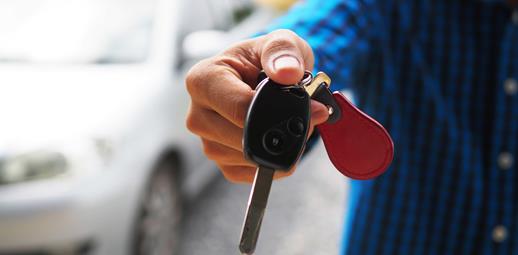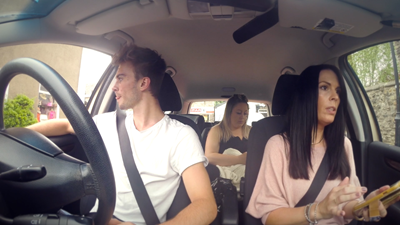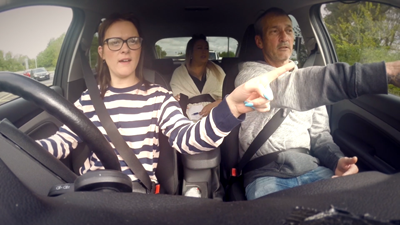
Your son or daughter has passed their driving test and now they’re desperate for their first set of wheels.
Of course, cars don’t come cheap, so you may plan to help them financially. If that’s the case, you’re not alone: one in five parents (20%) said that they would buy or make a contribution towards their child’s first car, in a 2015 survey by Kwik Fit.
But how can you be sure to get the right car for your newly qualified offspring? Read on to find out.
Start by working out your priorities
Work out your priorities and budget before you start car shopping and don’t forget to discuss them with your young driver. This could save you time and money, as well as keep any arguments at bay.
Even if you have the money to buy them a nice new car, you and your child may have very different ideas about what sort of car they should start with. While you’re thinking safe and steady, their priority might be impressing their mates.
There is likely to be room for compromise on some features. But ultimately, it comes down to finding the most reliable and safest model in your budget.
Budget for safety
If your budget allows, follow the advice of vehicle safety organisation Thatcham Research, and only consider cars with a five-star Euro NCAP safety rating and a collision avoidance technology like Autonomous Emergency Brakes and Lane Assist systems.
Similarly, the newer the better, as car safety is constantly improving. To illustrate this, Thatcham produced a video showing the difference in the protection provided by a 1997 Rover 100, a top-selling car in its day, and a modern Honda Jazz.
Whereas the test showed the Rover 100 would have inflicted life-threatening injuries at 40mph, an identical test showed the occupants of the Honda Jazz - which scored Euro NCAP’s top-rated five stars - would have walked away.
Consider one of these cars
Auto Express has listed its pick of the best new cars for new drivers. It says they’re small enough to be manageable, while also being good to drive and offering some luxuries to keep new drivers safe and connected.
Here are the cars:
- Volkswagen up!/Skoda Citigo/SEAT Mii
- Ford Fiesta
- Kia Picanto
- SEAT Ibiza
- Volkswagen Polo
- Hyundai i10
- Toyota Aygo/Peugeot 108/Citroen C1
- Dacia Sandero
- Suzuki Baleno
- Vauxhall Viva
You can explain the benefits of small cars to your newly qualified child. A smaller engine is better for fuel economy and, what’s more, insurance companies charge more for vehicles with powerful engines.
Reliability
When shopping around for your child’s first car, reliability should also be a priority.
From Auto Express’s list above there is one stand-out that really ticks this box: the Ford Fiesta. The petrol 2008-2017 version of this popular car was ranked by What Car? as the most reliable vehicle to have covered more than 60,000 miles. The What Car? Research showed that just under one in five (20%) Ford Fiestas had a fault and that the most common problem areas were minor: bodywork and non-engine electrics.
Get the right insurance cover
Young drivers can face seemingly high insurance costs because they’re far more likely to be involved in a car accident than experienced drivers.
If you plan to add your children to your car insurance, then read this guide, which covers requirements, costs and the dangers of ‘fronting’.
One option to consider is a black box or telematics policy, which offers personalised insurance based on how your child drives.
Choose a car in a low insurance group
Vehicles with powerful engines, which are in higher insurance groups and are associated with a greater risk of accidents, tend to have higher premiums.
However, there are other factors that can help lower your insurance premium. An approved alarm and immobiliser could shave a few pounds off your policy, as could parking your car off-road overnight, ideally in a locked garage.
Use the Thatcham website to check insurance groupings by car model. From Auto Express’s list above, for example, the trio of cars sharing the No 1 spot all sit in insurance group one or two – the cheapest groups to insure.
Consider the best way to pay
You’re unlikely to walk into a forecourt with a wodge of cash, so consider which of the many different ways to pay for a car would be best suited to you - and which should be avoided.
See our guide to the most common payment options available to car shoppers.
Don’t forget maintenance
Before they spin off in their new set of wheels, it’s worth trying to encourage your child to keep up with some essential maintenance on their new car.
At its most basic, this includes checking tyre pressure, and ensuring levels of fluids, including windscreen wash, are topped up.
But there is plenty more that they should be doing to keep their car roadworthy and safe – assuming they haven’t already offloaded that job onto you.

